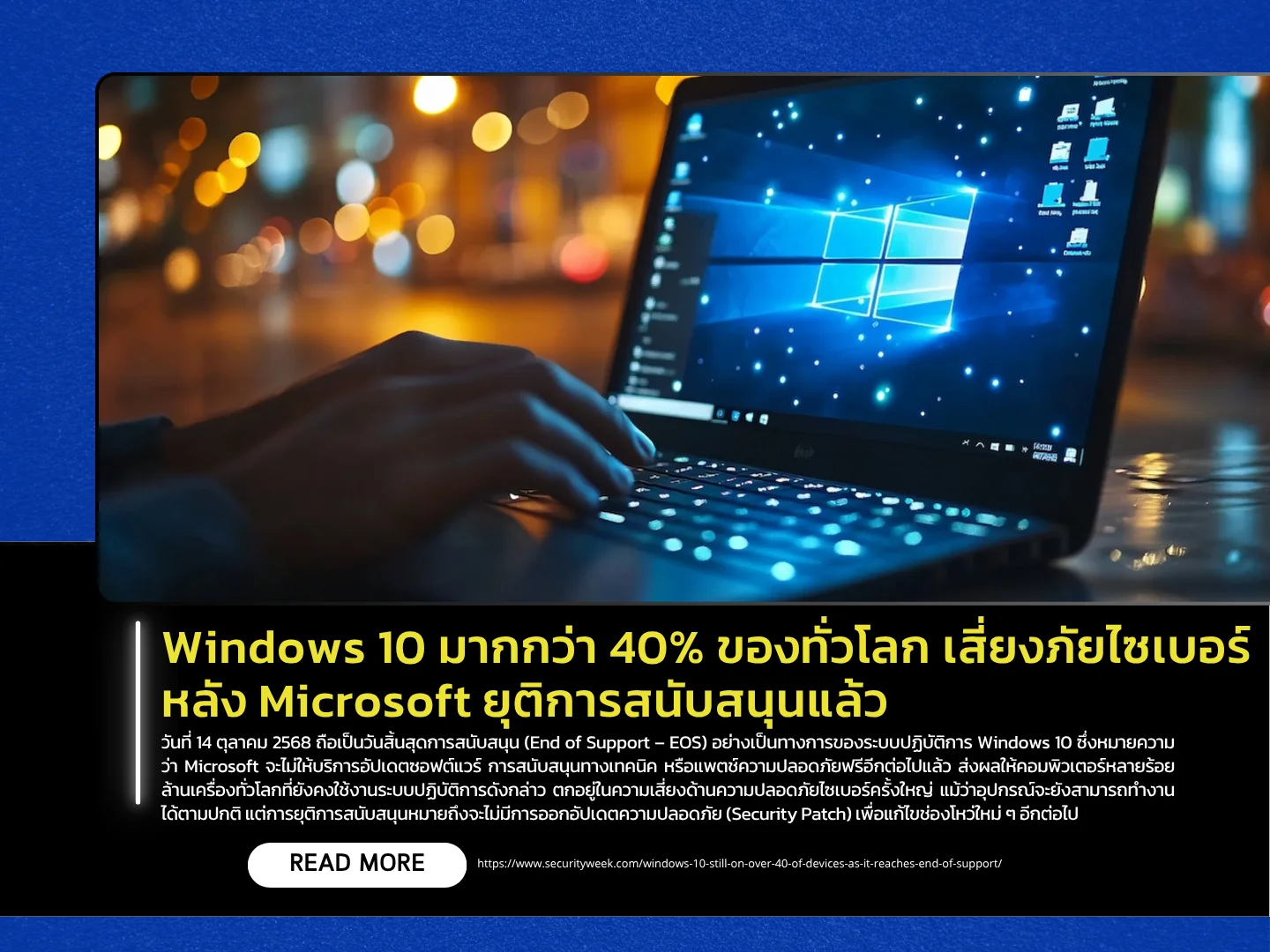402/68 Wednesday, October 15, 2025

On October 14, 2025, Microsoft officially ended support (End of Support – EOS) for the Windows 10 operating system. This means that the company will no longer provide software updates, technical support, or free security patches. As a result, hundreds of millions of computers worldwide that still rely on Windows 10 now face a significant cybersecurity risk. Although the operating system will continue to function, the lack of ongoing security patches means newly discovered vulnerabilities will remain unaddressed, leaving these systems highly susceptible to malware and hacker attacks.
Recent data from sources including Statcounter, TeamViewer, and Kaspersky indicates that more than 40% of computers worldwide are still running Windows 10, with enterprise environments accounting for nearly 60% of that share.
For users unable to upgrade to Windows 11 immediately, Microsoft has introduced the Extended Security Updates (ESU) program as a temporary solution. This paid service provides additional security updates at a cost of $30 per year for consumers and $61 per device for enterprises in the first year, with fees doubling each year thereafter (available for up to three years). Exceptions apply: users in the European Economic Area (EEA) will receive ESU at no cost, and individual users may redeem Microsoft Rewards points for access. However, experts caution that this approach only serves as a short-term measure.
Cybersecurity professionals stress that organizations must urgently plan to upgrade or decommission all Windows 10 devices. Priority should be given to systems handling sensitive data, such as those under GDPR compliance or financial records, to reduce exposure to unpatched vulnerabilities. Ignoring long-term system updates could lead to severe business damage and potentially incalculable losses.
Source https://www.securityweek.com/windows-10-still-on-over-40-of-devices-as-it-reaches-end-of-support/
